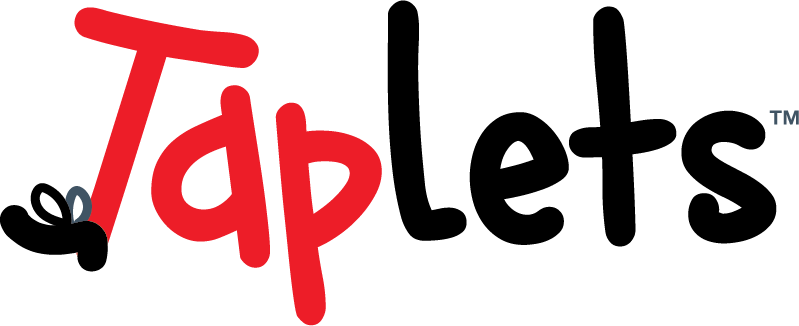Early Childhood Program
Forevermore offers preschool aged children, classes specifically crafted to boost gross motor coordination, listening skills, musicality, and foster creativity. Every session integrates age-appropriate guidance using music, props, and dance. Participants get the chance to showcase their skills on stage during our annual Jingle Jam Holiday Show in December and Recital held in June.
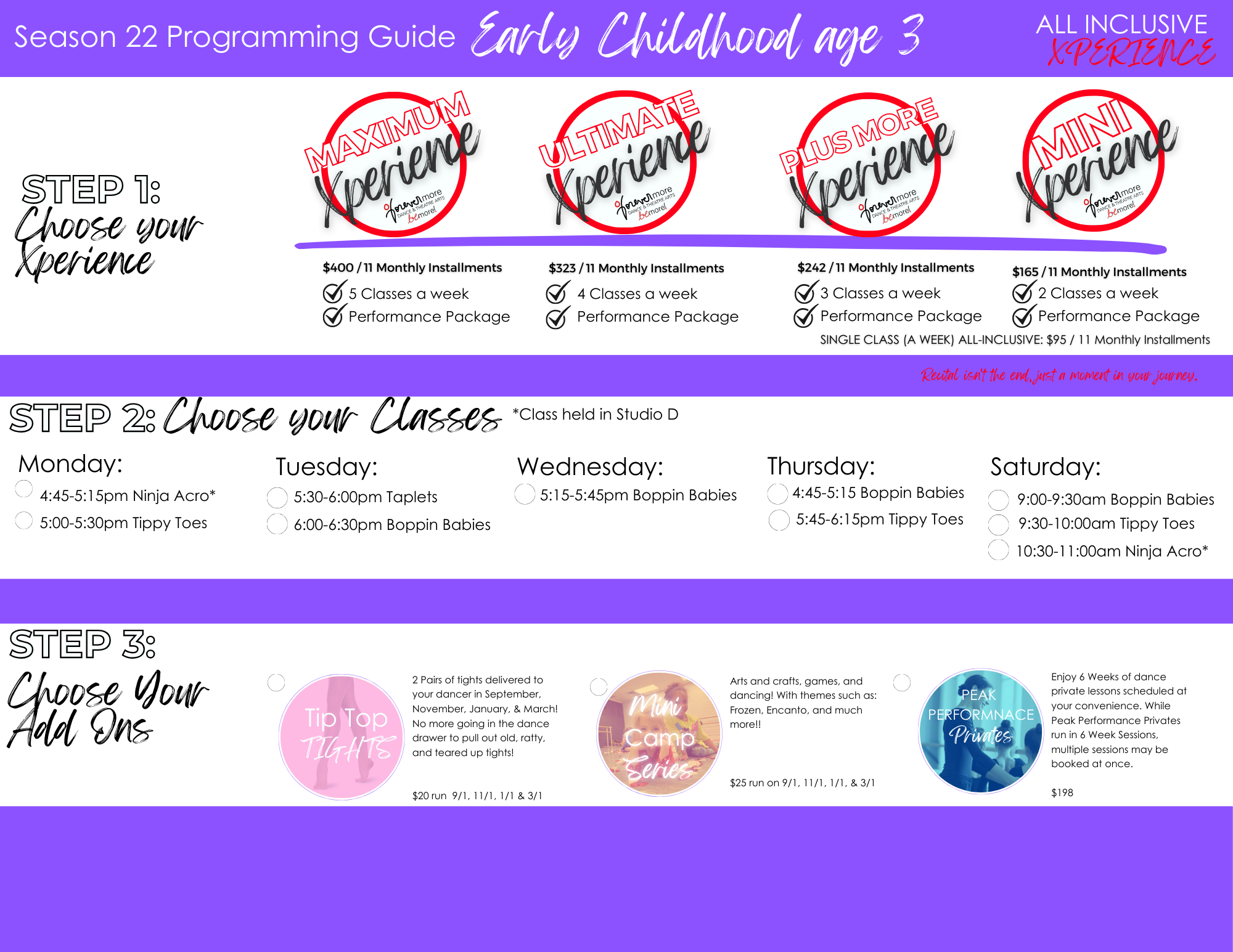


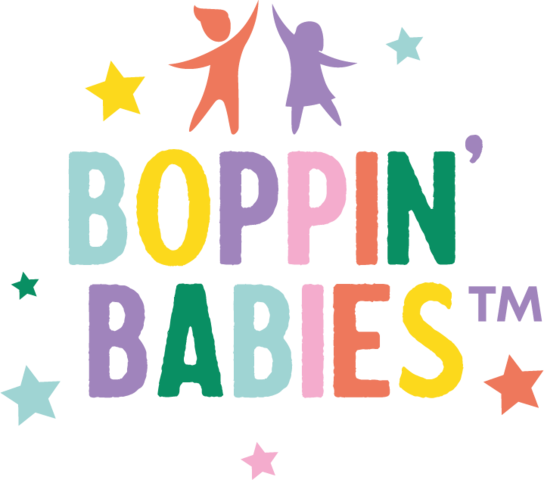
12 months- 36 months olds and caregivers
Designed for toddlers and caregivers to enhance gross motor coordination and listening skills through music, props, crafts, and dance. We use creative movement, fun songs, and energetic games to kick-start your little ones' success!

3-4 year olds
Designed for toddlers to enhance gross motor coordination and listening skills through music, props, crafts, and dance.
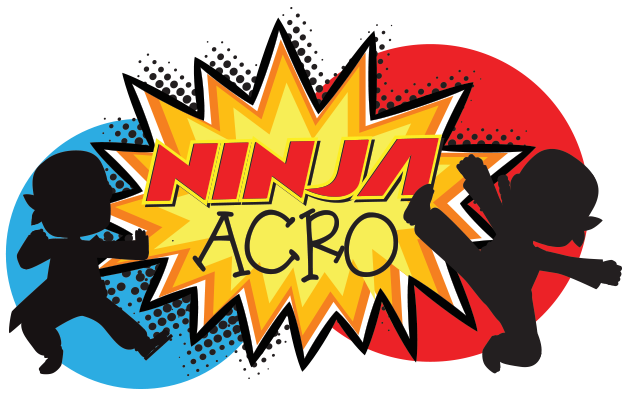
3-5 year olds
Ninja Acro is just the right class for children who love to go all around and upside down! By introducing basic skills from jazz, hip hop, acro, and creative movement, we guide these dancers through skills that are locomotor (sliding, galloping, leaping) and non- locomotor (stopping, stretching, rolling).

3-5 year olds
Introduces young dancers to basic ballet through the stories of the great ballets and storybook characters. Different classical ballet themes and storybooks are explored throughout the season.
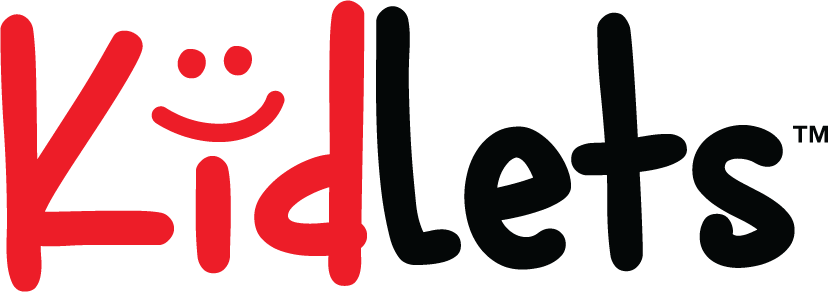
4-5 year olds
Introduces young dancers to basic ballet through monthly creative movement themes.
Children's Classes
Watch your child discover the joy of dance with Forevermore's K-1st Grade Program! Designed with your little one in mind, our program emphasizes fun and friendship while fostering confidence through fundamental technique training. With us, your child will not only learn the basics of dance but also experience the thrill of performing on stage. Join us for our exciting annual Jingle Jam Holiday Show in December and Recital held in June. where young dancers shine bright! Start your child's dance journey with us today.
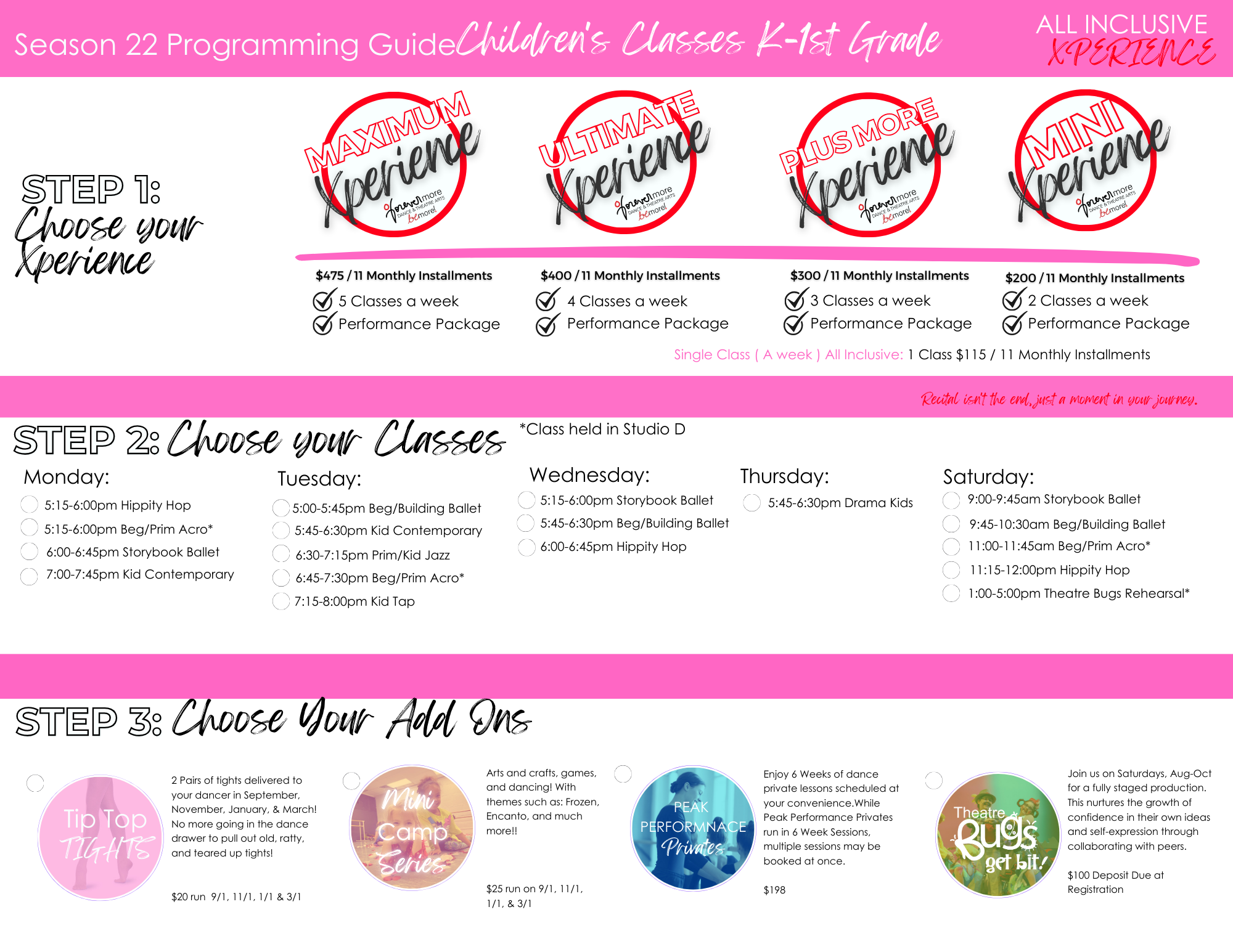
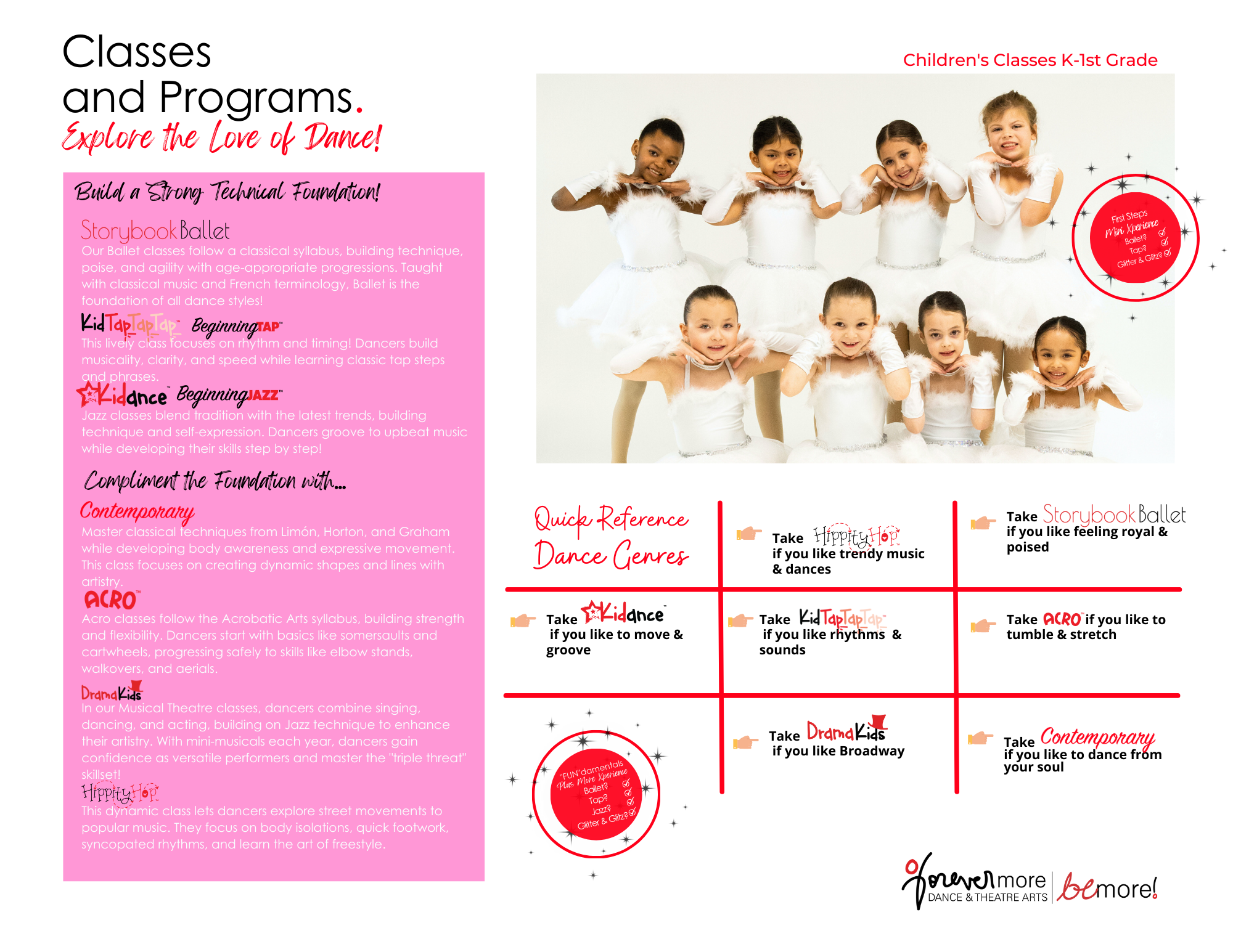
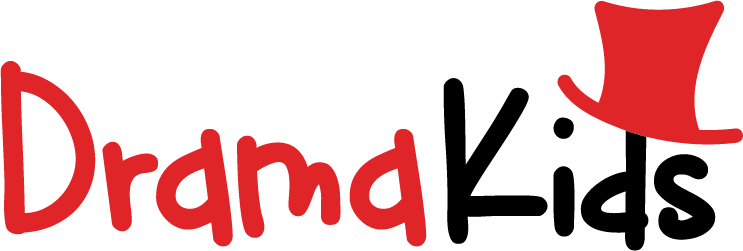
Kindergarteners-3rd Graders
Drama Kids teaches young students key building blocks for theatrical and musical stage performance and nurtures the growth of confidence in their own ideas and self expression. Through musical and theatrical games, imaginative story-telling, and song performance, students will learn basic acting and singing terms and skills.

Kindergarteners & 1st graders
Introduces the young dancer to the steps and grace of ballet, including barre exercises, traveling combinations and turns. Some Creative Movement activities are used to explore the young dancer's inherent love for movement.

Kindergarteners-3rd Graders
Rhythm and timing are the focus in this lively class. Dancers learn classic steps and phrases, building their skill in musicality, clarity, and speed throughout each year of study.
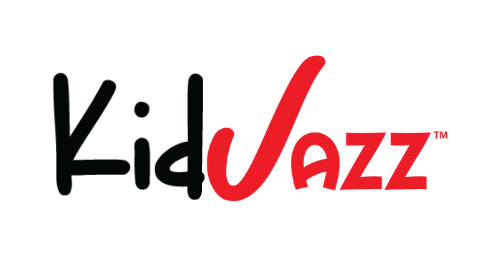
Kindergarteners-1st Graders
With an influence of both tradition and trends, our Jazz classes incorporate the latest styles, offering our Dancers a well-rounded experience. Technique and self expression grow step by step as the dancers groove through each class to upbeat music.
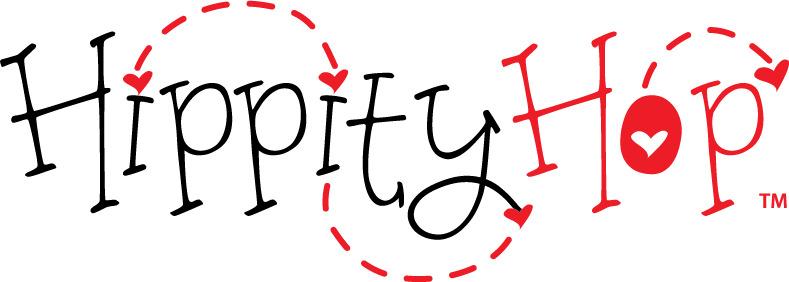
Kindergarteners & 1st graders
This high-energy class offers Dancers a way to explore age-appropriate street movements set to popular music. Body isolations, quick footwork, and syncopated rhythms are emphasized, along with learning how to freestyle.
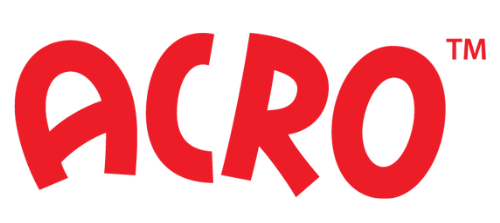
Kindergarteners-3rd Graders
With the guidance of Acrobatic Arts syllabus, Acro classes offer Dancers the chance to hone their strength and flexibility. Beginning with Acro fundamentals such as somersaults and cartwheels, Dancers safely build the skills they need to achieve more complex movements, such as elbow stands, walkovers, and side aerials.

Kindergarteners-3rd Graders
Study classical techniques from Limón, Horton, and Graham and develop a strong grounded sense of movement. This class is all about body awareness, and making pictures with the shapes and lines of the body that are created from the inside out.
Primary Program
In our program tailored for 1st, 2nd, and 3rd graders to explore dance while nurturing their love for music and movement. Our 'Begin and Build' approach ensures a solid foundation in dance technique, all while having a blast! Don't miss out on the chance for your child to shine on stage in our exciting annual events like the Jingle Jam Holiday Show in December and Recital held in June.
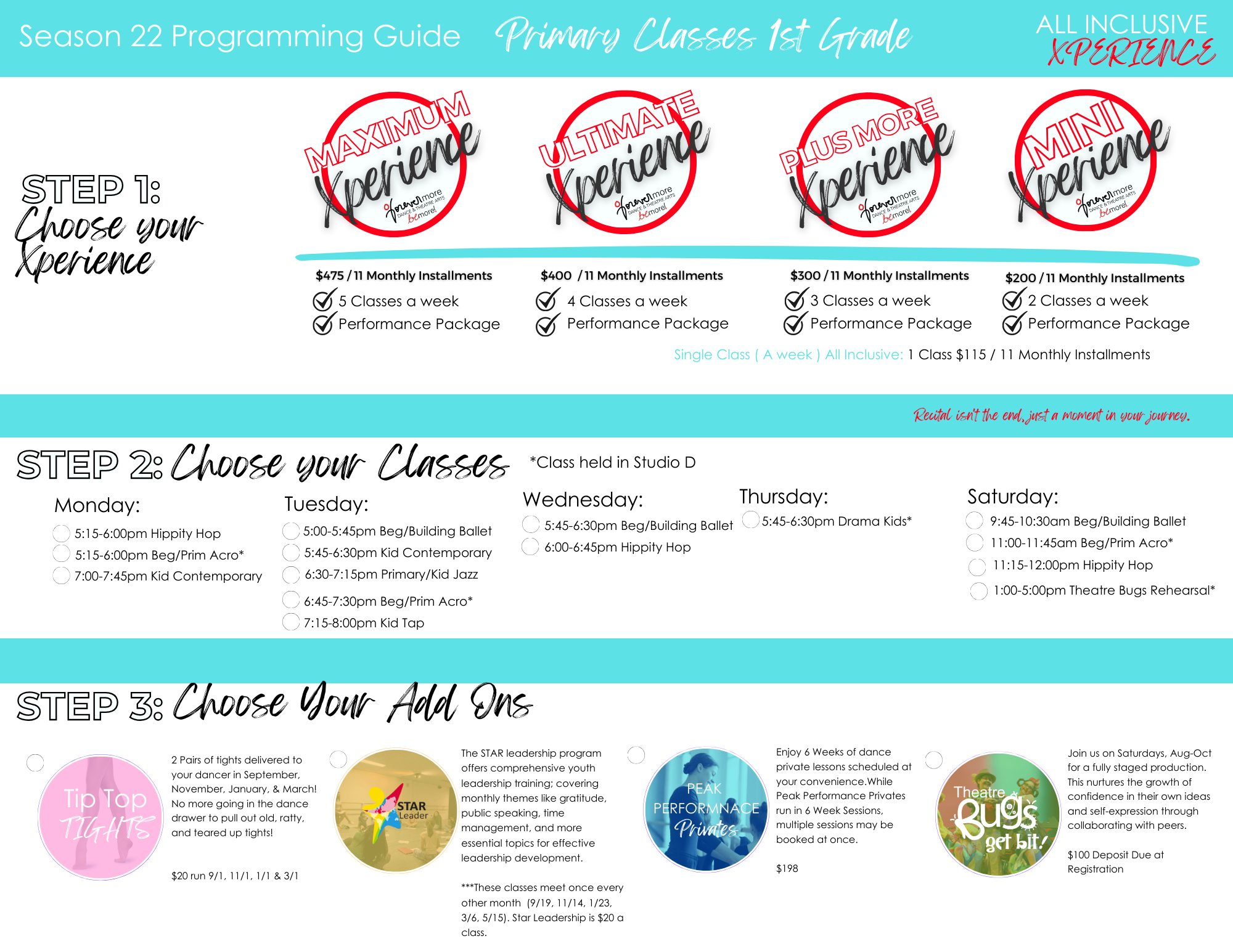
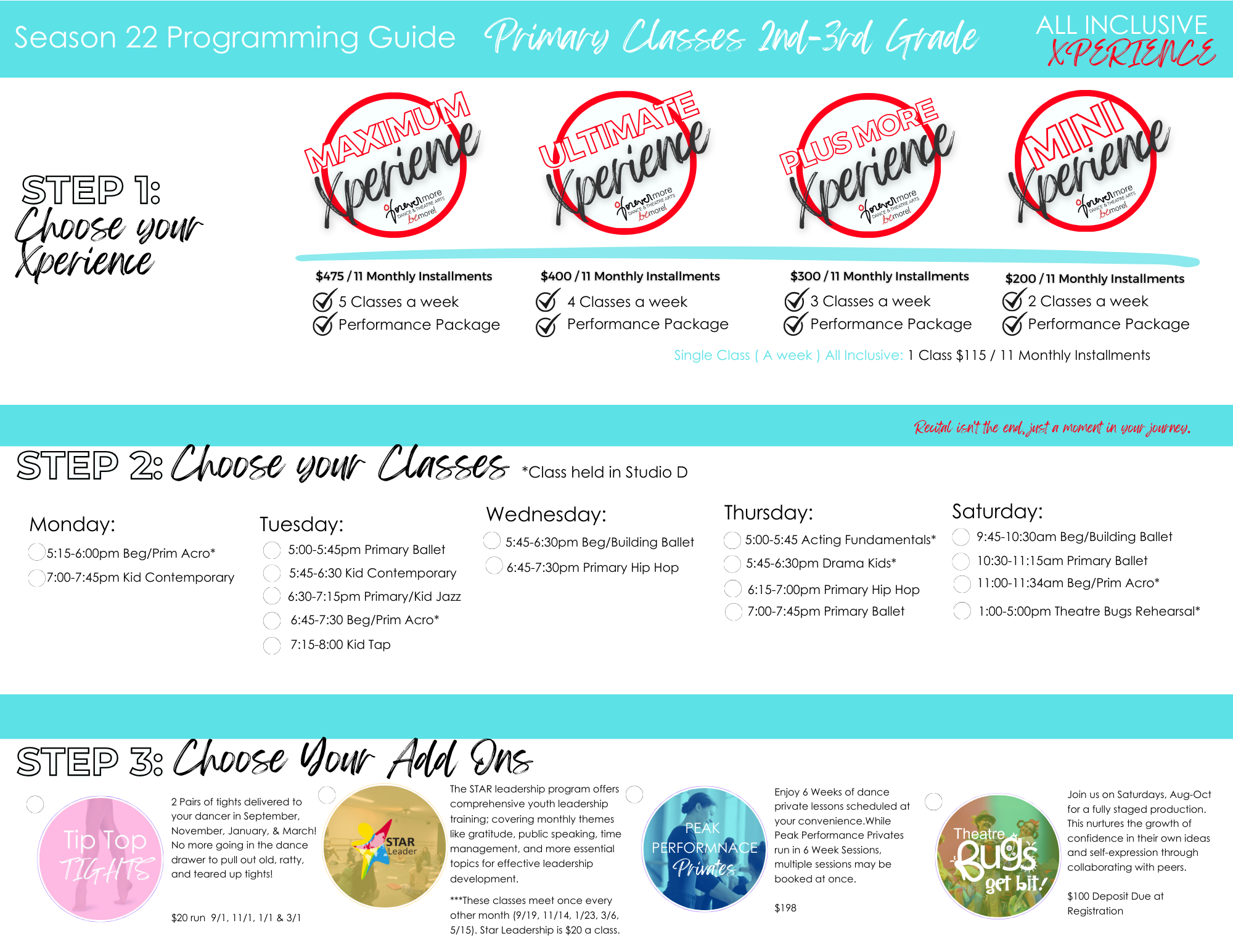
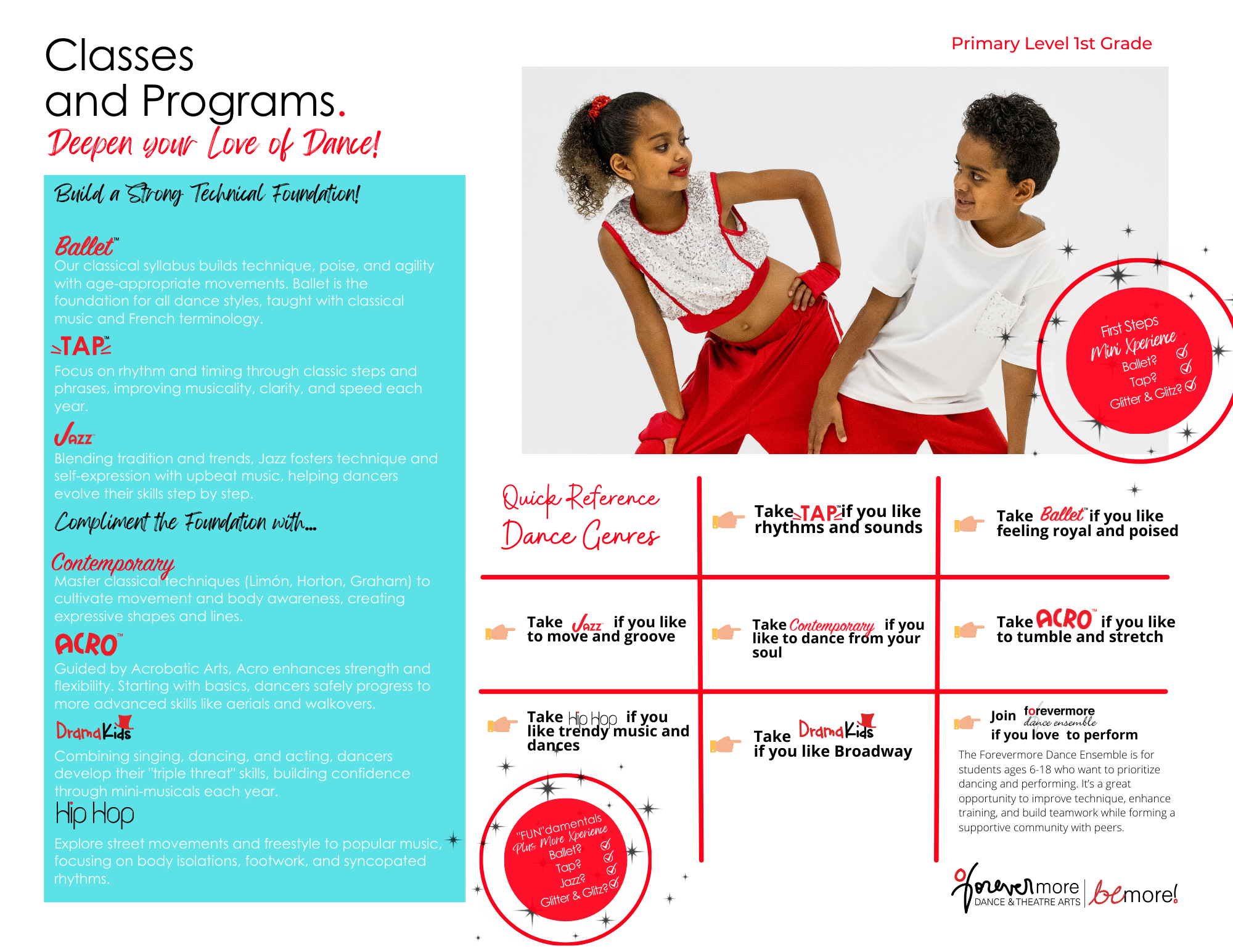
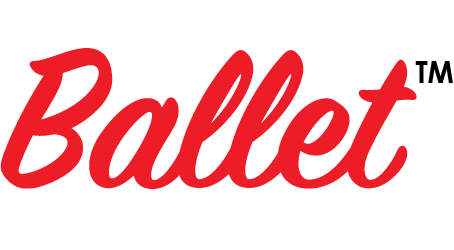
The entry level into the Youth Ballet Program. Students in this level are usually six to eight years old. In this class, they will learn the basic ballet positions, the progression of a standard ballet barre, and the French vocabulary that makes up ballet. These students also move into beginning center work, away from the support of the ballet barre. Some Creative Movement activities are used to explore the young dancer's inherent love for movement.
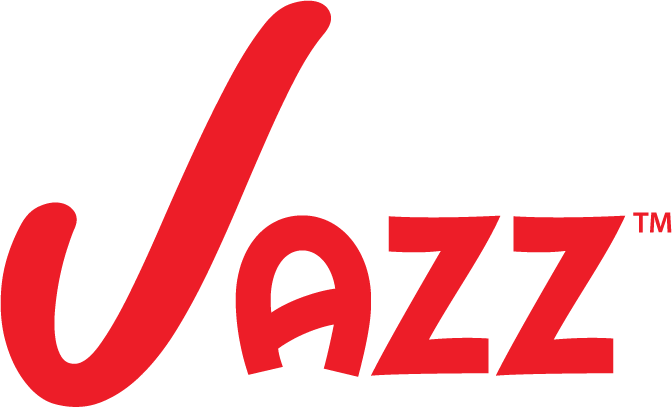
Jazz is the fire of contemporary dance! It utilizes techniques and movements inherent in Ballet and Modern Dance and spices it up with style and attitude designed to develop the expression of music through creative and fun choreography. These classes reflect many diverse styles of Jazz Dance ranging from Classical and Lyrical Jazz, Hip-Hop, and Musical Theatre Dance, while emphasizing the development of stage presence, alignment, and technique.
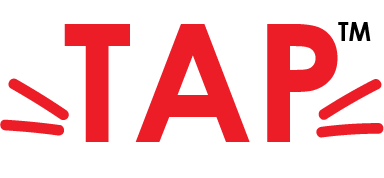
Tap, a dance form from the 1900s, is loved by both audiences and dancers. It's like playing a musical instrument with your feet, creating rhythms through intricate sounds like flaps, shuffles, slaps, and scuffles. Learning tap involves mastering proper terminology while enjoying reproducing different sounds and rhythms.

Study classical techniques from Limón, Horton, and Graham and develop a strong grounded sense of movement. This class is all about body awareness, and making pictures with the shapes and lines of the body that are created from the inside out.
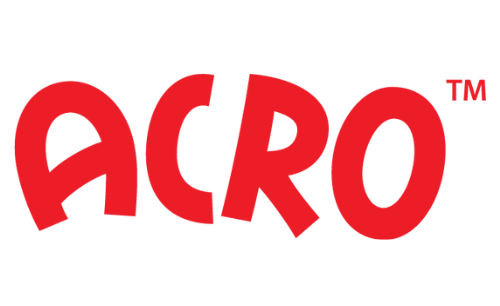
With the guidance of Acrobatic Arts syllabus, Acro classes offer Dancers the chance to hone their strength and flexibility. Beginning with Acro fundamentals such as somersaults and cartwheels, Dancers safely build the skills they need to achieve more complex movements, such as elbow stands, walkovers, and side aerials.

This high-energy class offers Dancers a way to explore age-appropriate street movements set to popular music. Body isolations, quick footwork, and syncopated rhythms are emphasized, along with learning how to freestyle.

Singing, dancing, and acting all take centre stage in our Musical Theatre classes, which are designed to build off of Jazz technique and grow each Dancer’s artistry. With several mini-musical opportunities throughout the year, Dancers build their confidence as a “triple threat” performer!
Elementary Program
Our Elementary Level classes are for children age 9 and 11. Experience is required. Dancers also have onstage performance opportunities in our annual Jingle Jam Holiday Show in December and Recital held in June.
Be sure to ask about our Star Leadership Program and we are accepting applications for our Teaching Assistant Scholarship Program. Also ask about becoming a member of our chapter of the National Honor Society for Dance.
Advancement is based on correct placement, skill mastery, and instructor recommendation – not by age – which means all classes have a variety of age levels. Students spend an average of two years at each level before mastering the skills to advance. Students receive annual skills tests each year. Ballet students take an additional vocabulary test.
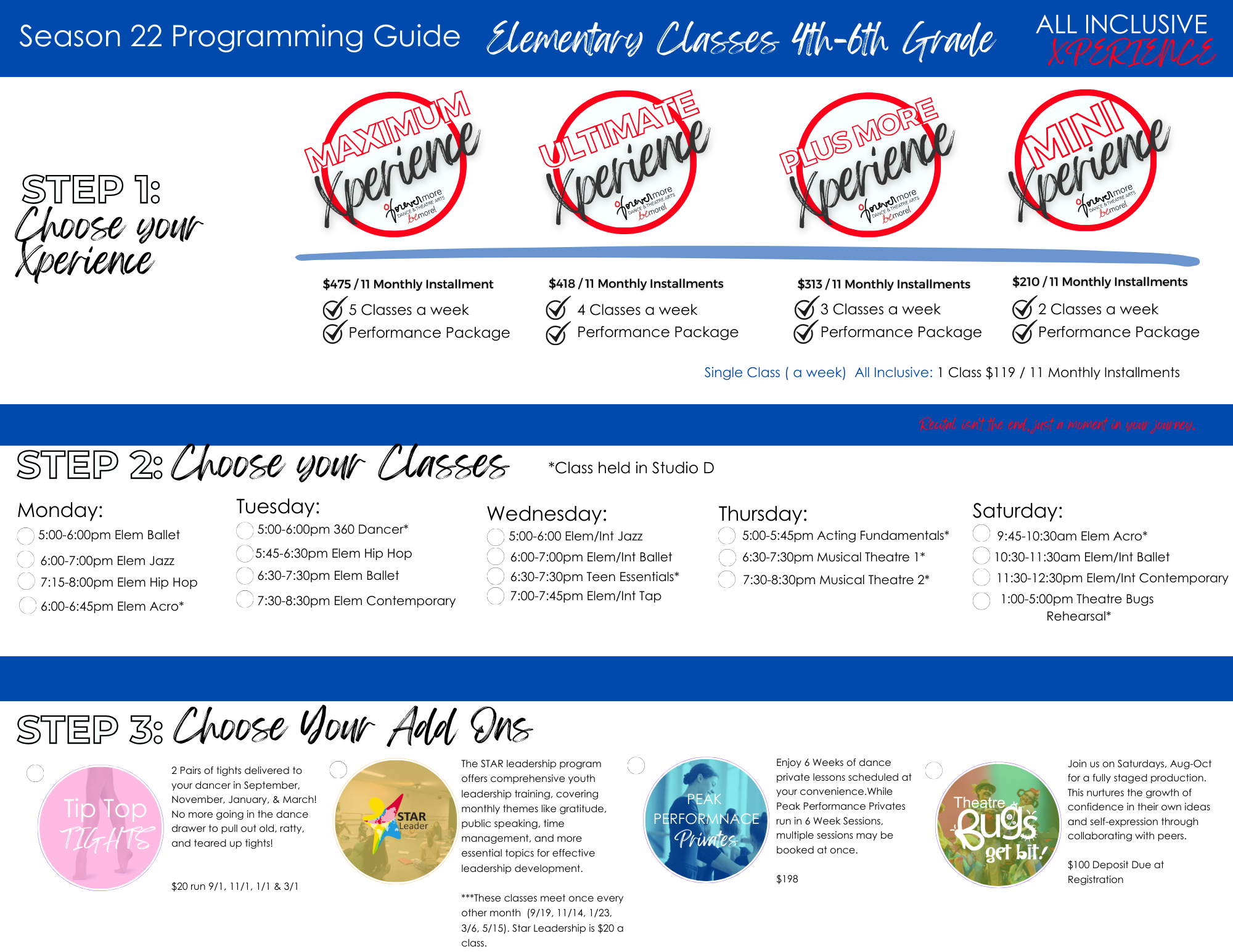


Following a classical syllabus, our Ballet classes promote technique, poise, and agility, and introduce age-appropriate movements at each level. Taught with classical music and French terminology, Ballet is known as the building block for all styles of dance! It is recommended that students begin to attend ballet twice a week at this level. Much like playing an instrument, practice is a critical part of success in any classical art form.

Jazz is the fire of contemporary dance! It utilizes techniques and movements inherent in Ballet and Modern Dance and spices it up with style and attitude designed to develop the expression of music through creative and fun choreography. These classes reflect many diverse styles of Jazz Dance ranging from Classical and Lyrical Jazz, Hip-Hop, and Musical Theatre Dance, while emphasizing the development of stage presence, alignment, and technique.

Tap, a dance form from the 1900s, is loved by both audiences and dancers. It's like playing a musical instrument with your feet, creating rhythms through intricate sounds like flaps, shuffles, slaps, and scuffles. Learning tap involves mastering proper terminology while enjoying reproducing different sounds and rhythms.

Our Musical Theatre Class helps students become Triple Threats - actors who sing, dance, and act. Ideal for musical-loving students aiming for school or community theatre roles. Whether confident in one area or not, this class builds skills and confidence across all aspects of musical theatre. Students study vocals, choreography, and receive acting coaching while staging up to two Broadway numbers.

Contemporary dance appeals to the creative spirit, offering freedom and expressiveness. Students learn Horton, Graham, & Limon techniques, focusing on internal movement, breath, and connection. Through warm-ups and exercises emphasizing extension, release, momentum, and improvisation, dancers develop versatility to handle any style.

With the guidance of Acrobatic Arts syllabus, Acro classes offer Dancers the chance to hone their strength and Flexibility. Beginning with Acro fundamentals such as somersaults and cartwheels, Dancers safely build the skills they need to achieve more complex movements, such as elbow stands, walkovers, and side aerials.

Hip Hop is a stylized form of Jazz dance that evolved out of street and breakdancing moves, and is characterized by its vigorous athletics and funky style. Students will learn the hottest dance moves seen by today's brightest stars while incorporating the fundamentals of Hip Hop technique.
Intermediate Program
These classes are for dancers age 12 and up who love to dance. Experience is required. Dancers also have onstage performance opportunities in our annual Jingle Jam Holiday Show in December and Recital held in June.
Be sure to ask about our new Star Leadership Program and we are accepting applications for our Teaching Assistant Scholarship Program. Also ask about becoming a member of our chapter of the National Honor Society for Dance.
Advancement is based on correct placement, skill mastery, and instructor recommendation – not by age – which means all classes have a variety of age levels. Students spend an average of two years at each level before mastering the skills to advance. Students receive annual skills tests each year. Ballet students take an additional vocabulary test.
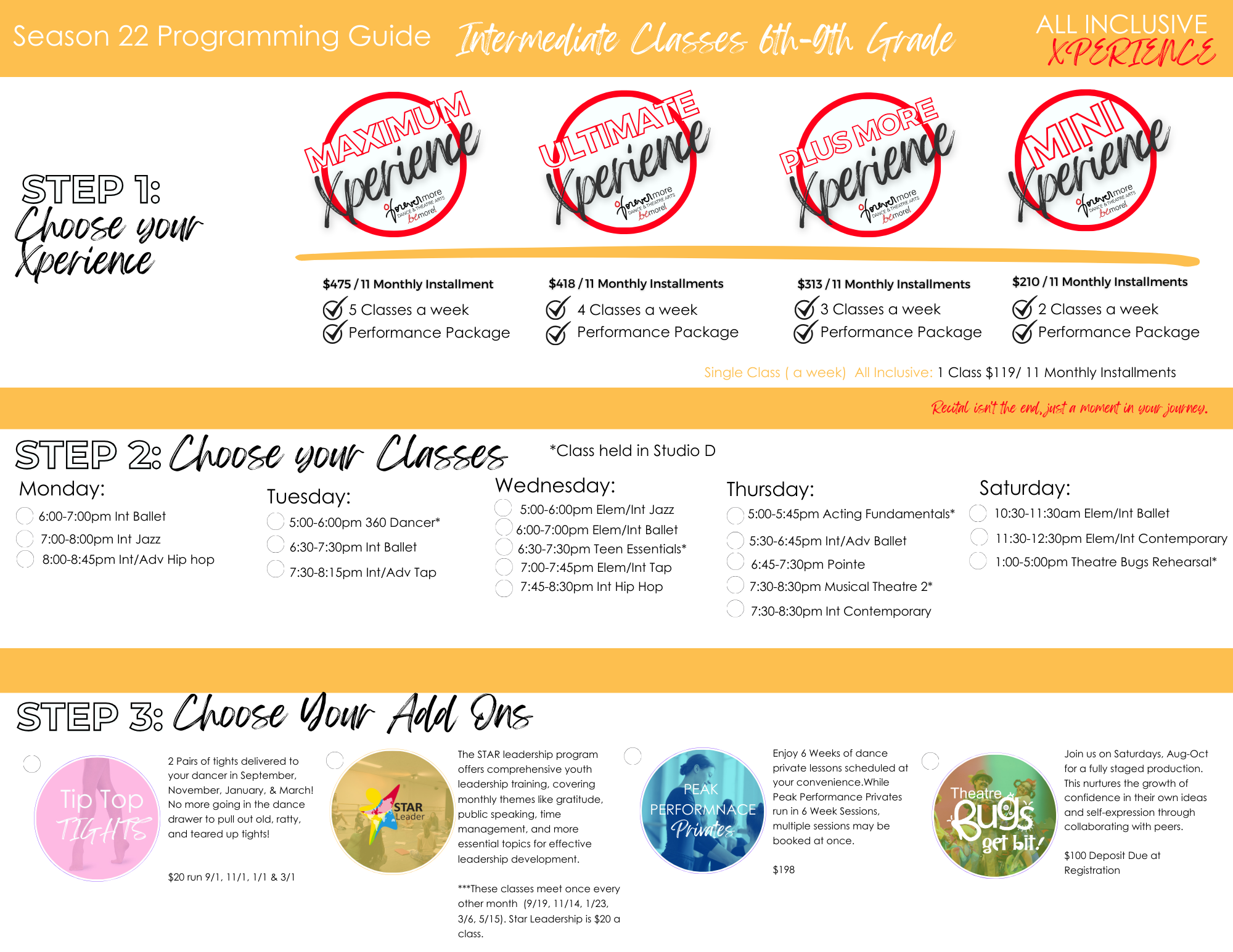
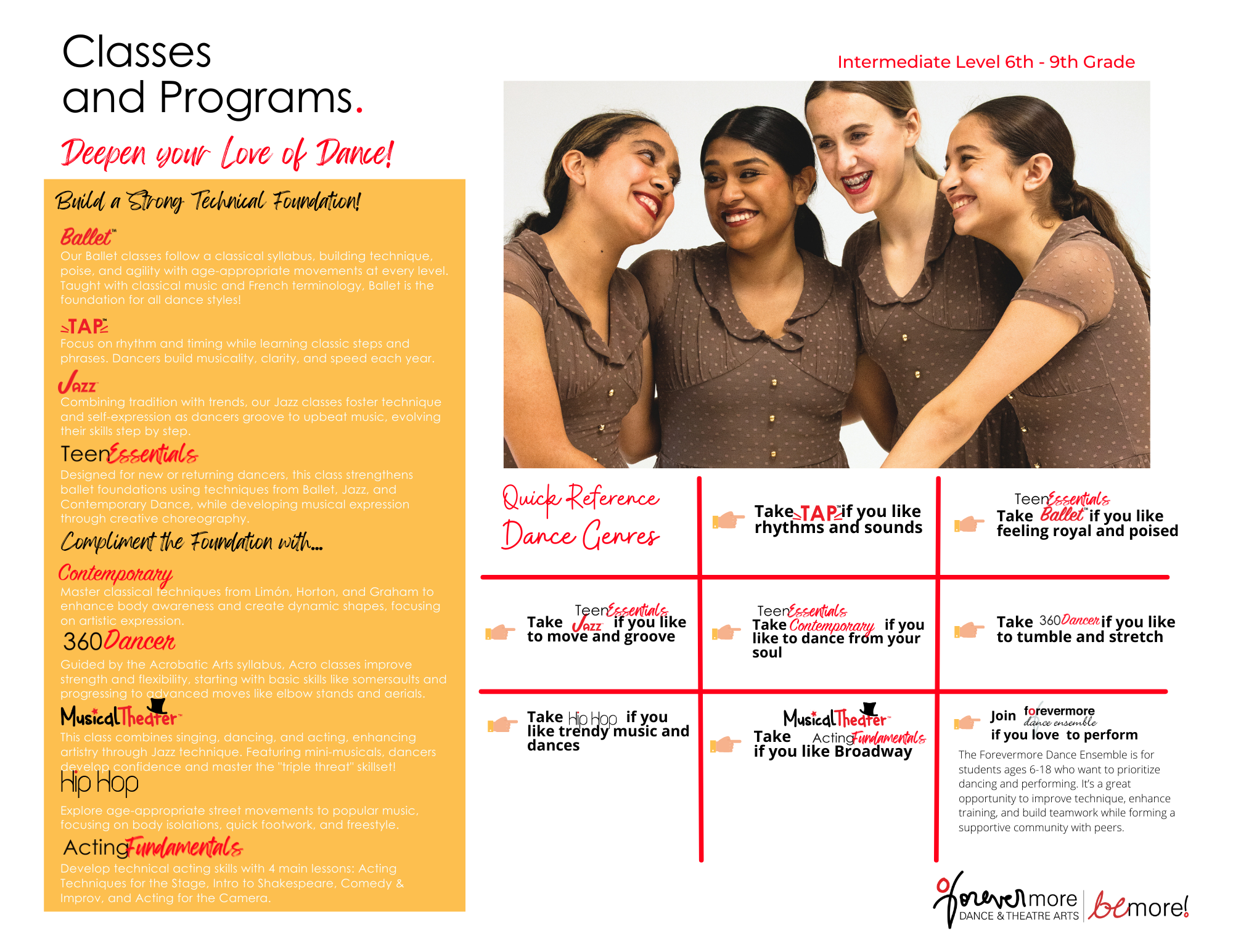

Advancing to these levels indicates dedication and strong ballet alignment, stability, and placement. It typically takes two to three years to complete each level (with 2-3 classes per week). Dancers build stamina while maintaining clean lines and placement, show more independence in taking and applying corrections, and demonstrate increased flexibility and balance, including consistent double pirouettes. To prepare for the High School Program, students are recommended to attend ballet classes 2-3 times a week at these levels.

Forevermore’s Pointe Program is a specialized opportunity for ballet students to enhance their skills and reach their full artistic potential. Admission is by recommendation from a Forevermore Instructor, requiring previous ballet experience, talent, and commitment. Students must enroll in Pointe Technique class and two Ballet Technique classes weekly. Pointe, an extension of ballet, involves dancing on the tips of toes in special shoes, originally used in Classical Ballet.

Jazz is the fire of contemporary dance! It utilizes techniques and movements inherent in Ballet and Modern Dance and spices it up with style and attitude designed to develop the expression of music through creative and fun choreography. These classes reflect many diverse styles of Jazz Dance ranging from Classical and Lyrical Jazz, Hip-Hop, and Musical Theatre Dance, while emphasizing the development of stage presence, alignment, and technique.

Tap, a dance form from the 1900s, is loved by both audiences and dancers. It's like playing a musical instrument with your feet, creating rhythms through intricate sounds like flaps, shuffles, slaps, and scuffles. Learning tap involves mastering proper terminology while enjoying reproducing different sounds and rhythms.

Contemporary dance appeals to the creative spirit, offering freedom and expressiveness. Students learn Horton, Graham, & Limon techniques, focusing on internal movement, breath, and connection. Through warm-ups and exercises emphasizing extension, release, momentum, and improvisation, dancers develop versatility to handle any style.

Our Musical Theatre Class helps students become Triple Threats - actors who sing, dance, and act. Ideal for musical-loving students aiming for school or community theatre roles. Whether confident in one area or not, this class builds skills and confidence across all aspects of musical theatre. Students study vocals, choreography, and receive acting coaching while staging up to two Broadway numbers.

With the guidance of Acrobatic Arts syllabus, Acro classes offer Dancers the chance to hone their strength and flexibility. Beginning with Acro fundamentals such as somersaults and cartwheels, Dancers safely build the skills they need to achieve more complex movements, such as elbow stands, walkovers, and side aerials.

Hip Hop is a stylized form of Jazz dance that evolved out of street and breakdancing moves, and is characterized by its vigorous athletics and funky style. Students will learn the hottest dance moves seen by today's brightest stars while incorporating the fundamentals of Hip Hop technique.
High School Program
These classes are for dancers in High School who love to dance. Experience is required. Advancement is based on correct placement, skill mastery, and instructor recommendation-not always by age which means all classes have a variety of age levels. Students spend several years at each level before mastering the skills to advance. Students receive annual skills test. Ballet students take an additional vocabulary test.
Dancers have onstage performance opportunities in our annual Jingle Jam Holiday Show in December and Recital held in June.
All dancers in this program are eligible for our Graduating Senior Scholarship Program. Be sure to fill out an application. Also ask about becoming a member of our chapter of the National Honor Society for Dance.
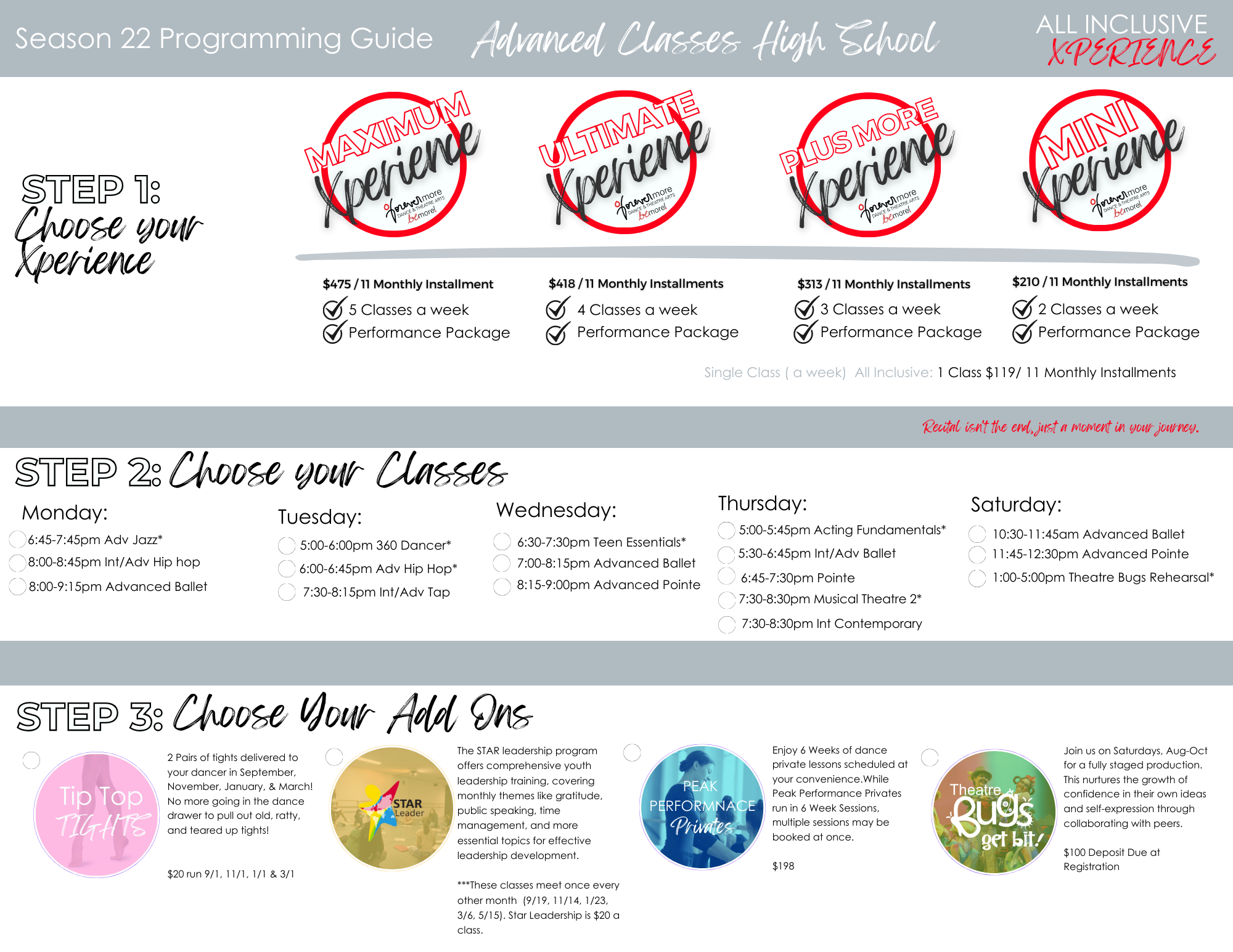
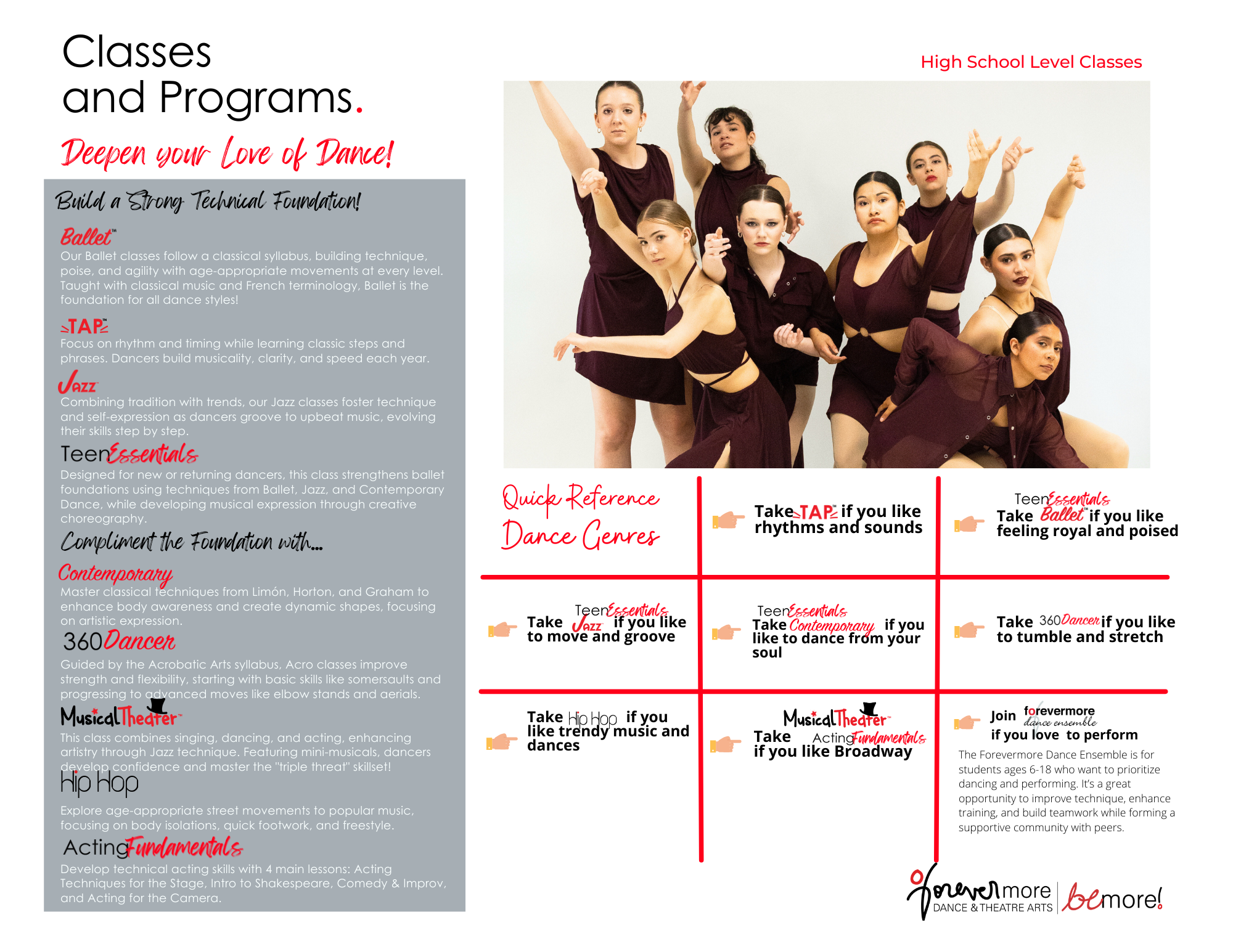

Advancing to these levels indicates dedication and strong ballet alignment, stability, and placement. It typically takes two to three years to complete each level (with 2-3 classes per week). Dancers build stamina while maintaining clean lines and placement, show more independence in taking and applying corrections, and demonstrate increased flexibility and balance, including consistent double pirouettes.

Forevermore’s Pointe Program is a specialized opportunity for ballet students to enhance their skills and reach their full artistic potential. Admission is by recommendation from a Forevermore Instructor, requiring previous ballet experience, talent, and commitment. Students must enroll in Pointe Technique class and two Ballet Technique classes weekly. Pointe, an extension of ballet, involves dancing on the tips of toes in special shoes, originally used in Classical Ballet.

Jazz is the fire of contemporary dance! It utilizes techniques and movements inherent in Ballet and Modern Dance and spices it up with style and attitude designed to develop the expression of music through creative and fun choreography. These classes reflect many diverse styles of Jazz Dance ranging from Classical and Lyrical Jazz, Hip-Hop, and Musical Theatre Dance, while emphasizing the development of stage presence, alignment, and technique.

Tap, a dance form from the 1900s, is loved by both audiences and dancers. It's like playing a musical instrument with your feet, creating rhythms through intricate sounds like flaps, shuffles, slaps, and scuffles. Learning tap involves mastering proper terminology while enjoying reproducing different sounds and rhythms.

Our Musical Theatre Class helps students become Triple Threats - actors who sing, dance, and act. Ideal for musical-loving students aiming for school or community theatre roles. Whether confident in one area or not, this class builds skills and confidence across all aspects of musical theatre. Students study vocals, choreography, and receive acting coaching while staging up to two Broadway numbers.

With the guidance of Acrobatic Arts syllabus, Acro classes offer Dancers the chance to hone their strength and Flexibility. Beginning with Acro fundamentals such as somersaults and cartwheels, Dancers safely build the skills they need to achieve more complex movements, such as elbow stands, walkovers, and side aerials.

Hip Hop is a stylized form of Jazz dance that evolved out of street and breakdancing moves, and is characterized by its vigorous athletics and funky style. Students will learn the hottest dance moves seen by today's brightest stars while incorporating the fundamentals of Hip Hop technique.
Free Studio Info Kit
You’ll find information on our studio, classes and programs in our Studio Info Kit. Download your free copy here.
find your class
Your child will fall in love with dance, music, and theatre with our classes ages 2-18!
More links
find us
7466 W. Belmont Ave.
Chicago, IL 60634
contact us
info@forevermorearts.com
(773) 237-5200

©ForevermoreArts. All Rights Reserved
